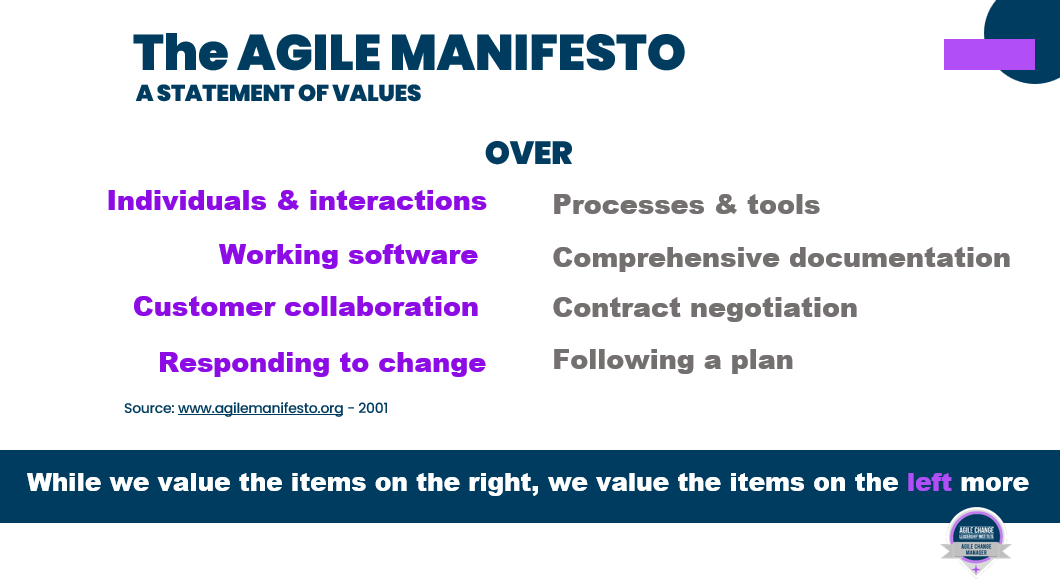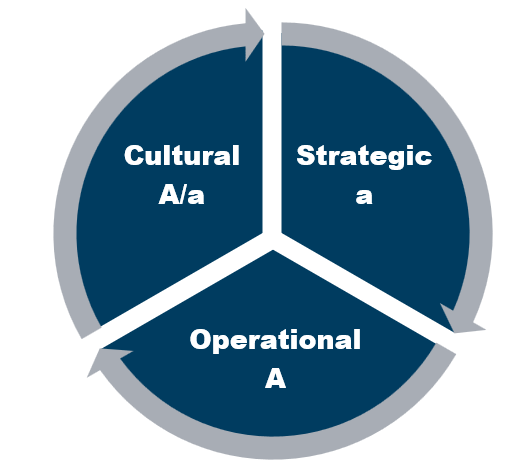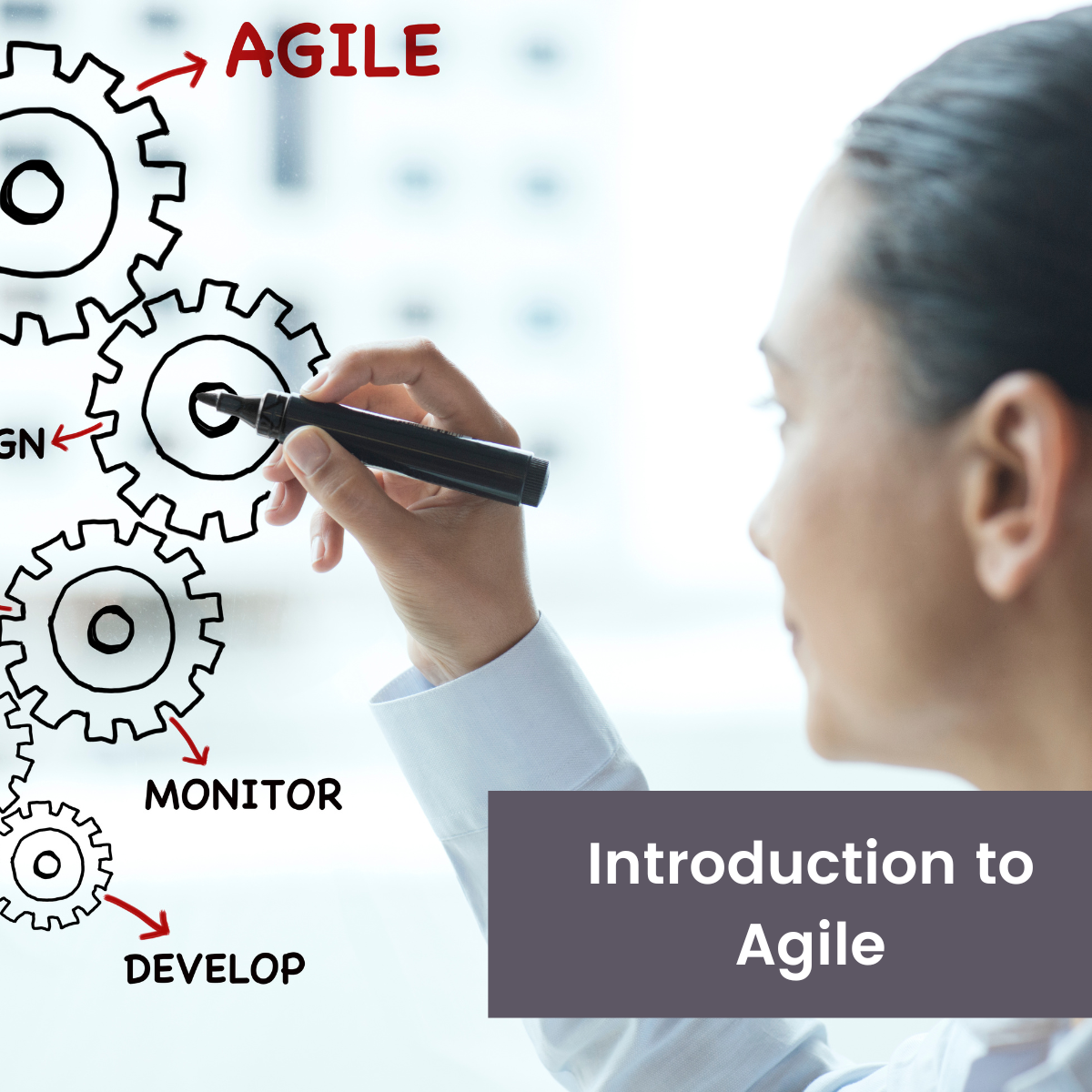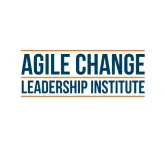Let’s start at the beginning (almost)
In understanding how we come to be talking about the concept of Agile Change Management and its importance, we tend to think of it as a story of snowballing! Let us explain. While Agile and agility has origins much earlier than 2001, that’s the point in time where our common understanding tends to launch from.
Once upon a time (in 2001), at a conference in Utah, USA, 17 independent thinkers from all forms of software development created what was known as the Agile Manifesto. It was in essence a statement of culture that creates quality software at speed. And it was built on four values of Agile.
Let’s have a quick look at them now, keeping in mind this is a continuum of decision making not a binary choice.

The four values mantra in the manifesto states that:
While there is value in the items on the right, we value the items on the left more.
It’s not one or the other. It’s a shift towards one without throwing away the other.
Value 1: Individuals and interactions over processes and tools
This value is lived through the rituals which essentially help people to interact – daily stand-up meetings called ‘scrums’, and ‘retrospectives’ where you look back at a defined period of time to run through what worked, what didn’t, and how to iterate with that learning. It emphasises collaboration and communication, having tough conversations and understanding the impact of diversity in teams.
Value 2: Working software over comprehensive documentation
This is the value that asks us to think about the Minimal Viable Product (MVP). A minimum viable product is a version of a new product or service which allows you to collect the maximum amount of learning about your customers and users with the least effort. It’s minimal and it is viable. In Agile, your quality gate is: what is the minimum viable product (or process) we can create and ship to the customer? You work in small chunks and deliver value continuously. Often, we spend a lot of time developing business requirements that need extensive sign-offs and long check-lists that make us feel safe but rarely get used. This value speaks to the importance of speed of delivery and asks you to make choices over what to let go of.
Value 3: Customer collaboration over contract negotiation
This value speaks to us of the power of transparency, vulnerability and trust in our leadership and management of people. Co-creation is key! Together we build and launch new products and services. When your customer works with you to design your products and services you end up with better products and services. With this you need to take more risks in what you disclose though.
Value 4: Responding to change over following a plan
This value speaks to the importance of letting go. You need to be comfortable in relinquishing control, or recognising that control occurs through short feedback cycles that allow you to understand how well you’re travelling in your sprint towards your deliverables. Plans will change, many times, and this is where the agile mindset is exceptionally useful, you can be at one with the changes that come across your desk.
And then along came the 12 principles…
The four values of Agile then snowballed to the 12 principles of Agile.
The 12 principles of agile are a set of statements that provide guidance on how to bring the four agile values to life. They remind us that agile or agility are not about being anti-methodology or against planning, but more about balance with a customer and user focus.
The software companies that used this manifesto saw amazing results, which led project management people to think if developers can do things faster and of better quality, then why can’t we use this manifesto on things other than software? And so, they did.
Agile snowballed to being used in generic project methodology and was so successful that senior management said, well if developers and project teams of all kinds of types can use these principles and improve performance, why can’t we use this culture for our organizations?
And the snowball just got bigger and bigger.
Which brings us to today.
There are a couple of useful ways to look at it:
- Big A v Small a
- The three forms of agility (operational, strategic and cultural)

Let’s look at ‘Big A’ and ‘Small a’ first:
So…let’s look at what this means. We can clarify the definitions, so you have a common understanding and you are on the same page. We’ve discovered that the two versions of the word ‘agile’ – capitalised and all lower case – are often used interchangeably.
This is how we start the conversation: We draw the diagram below on a sheet of paper in our notebook or post it notes or white board.
It’s common practice in the Agile community to use the big A when referring to the Agile Manifesto and its associated practices. So…the Agile with Big A is about doing agile.
The little a is the adjective we use to describe adaptive, flexible, nimble, quicker of mind and faster in movement. An athlete is nimble in action just as an insightful thinker is agile of mind. This is about being agile.
Here’s an explanation of the difference and how it plays out in an organisation:
When an organisation wants to become more agile; they look for ways to be responsive to external forces, be adaptive, deliver services and products to customers faster, think outside the box, and eliminate waste to improve effectiveness.
To help them achieve this, they often recruit coaches and project managers who have experience in Agile software and product development. These projects using Agile practices alone will not make the organisation agile, as this also requires people with the right mindset and behaviours. Agile (yes, big A) project approaches will help, but will not achieve this alone. You need the agile mindset to accomplish the true benefits of agility.
Here’s another view:

If we look at it from the three models of agility: the trinity of strategic, operational, and cultural we see that:
Strategic agility references how we outperform our competitors by virtue of speed of practice, product and service.
Operational agility usually addresses Big A practices. This is what we actually do – what are the practices that help us move at speed?
Cultural agility addresses the beliefs we have and THIS is where the importance of mindset really stands out. Cultural agility is a mix of Big A and little a. The organisation adopts Big A values and principles while rewarding ‘little a’ characteristics demonstrated by people and teams – that is the mindset and behaviours.
So…there you have it!
If you enrol in our Agile Change Manager Certificate program you also learn about:
- What Agile in the workplace looks like
- What a change manager does in Agile initiatives
- The four core practices of Agile Change
- And the importance of thinking about your mindset and capabilities! In fact, you can preview that clip for free!


































